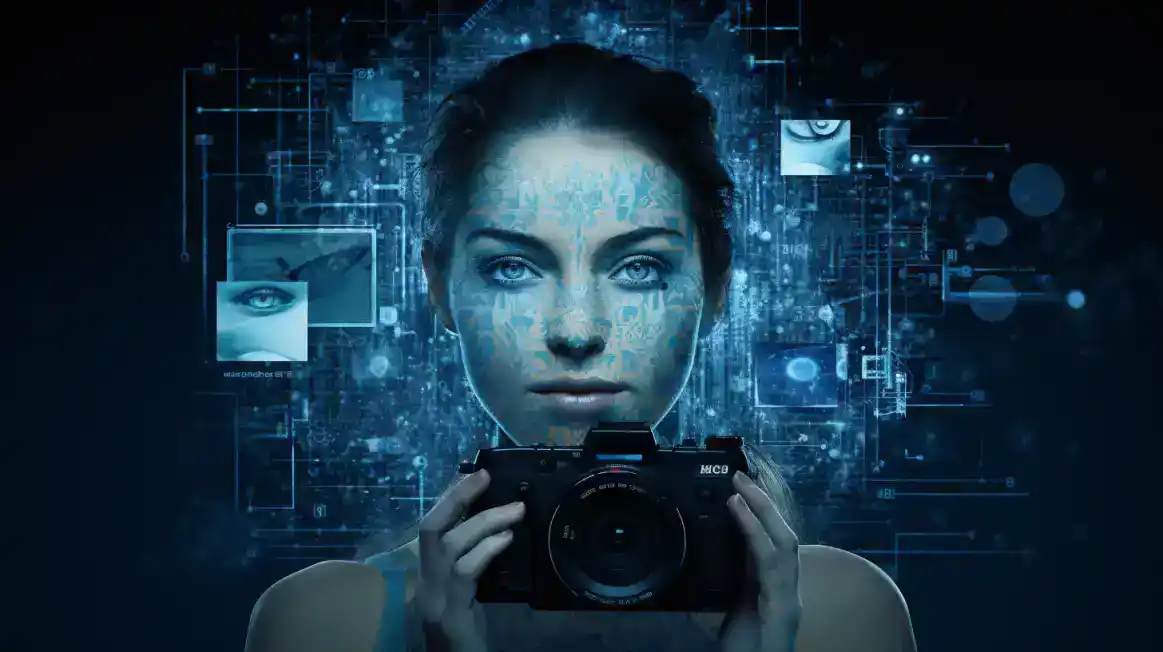Table of Contents
The advancement of artificial intelligence (AI) also brings along a potential threat to the reliability and credibility of digital images. AI-generated images, commonly known as deepfakes, have the ability to manipulate or fabricate visual content, including faces, objects, or scenes, with incredibly realistic results. This has serious implications for critical areas such as journalism, law, security, and social media, where image authenticity is critical.
Sony is working on Sony in-camera authenticity technology that will create a digital signature for images captured with their cameras. This digital signature can act as a birth certificate for images, validating their origin and content. Sony is working on this technology with the non-profit news organization Associated Press (AP) and the software company Camera Bits.
Sony has announced the completion of the second phase of testing for a new technology. This technology involves embedding a digital signature in a camera’s hardware chipset. The digital signature is created when a photographer takes a photograph, rather than when the image is saved to a computer or cloud service. This technology can help professionals ensure the authenticity of their content while also providing news organizations with an additional layer of security.
How Sony in-camera authenticity works
Sony did not reveal many details on how the Sony in-camera authenticity technology works, but it is likely that it uses a combination of encryption, hashing, and metadata. Encryption is a process of transforming data into a secret code that can only be decrypted by authorized parties. Hashing is a process of creating a unique identifier for data that can be used to verify its integrity. Metadata is a set of information that describes data, such as the camera model, the date and time, the location, and the settings.
The Sony in-camera authenticity technology can use encryption and hashing to create a digital signature for each image, which can be stored in the image file or in a separate file. The digital signature can contain metadata that describes the image, such as the camera model, the date and time, the location, and the settings. The digital signature can also contain a hash of the image content, which can be used to check if the image has been altered or tampered with in any way.
The digital signature can be verified by using software or a service that can decrypt the signature and compare the metadata and the hash with the image. If the metadata and the hash match the image, then the image is authentic and has not been modified. If the metadata or the hash does not match the image, then the image is not authentic or has been modified.
How Sony in-camera authenticity compare with other technologies
Sony is not the first company to work on a technology that can detect if an image has been tampered with in any way. Leica unveiled the M11-P rangefinder in October of this year, a camera that uses a Content Credential label that contains information about when the photo was taken and if any changes were made to it. The Leica camera, on the other hand, costs a whopping $9000 (approx. 7,50,000), which is far more than Sony’s Alpha models.

There are also other technologies that can analyze images for signs of manipulation, such as Adobe’s Content Authenticity Initiative, which uses blockchain and artificial intelligence to create and verify digital signatures for images. However, these technologies rely on external services or platforms, which may not be available or accessible to all users.
Sony in-camera authenticity technology has the advantage of being embedded in the camera’s hardware, which can make it more secure and reliable. Sony says that the digital signature feature will be available sometime in 2024 via a firmware update on its Alpha 9 III, Alpha 1, and Alpha 7S III models. These models are among the most advanced and professional cameras that Sony offers, and they are widely used by journalists, photographers, and videographers.
How Sony in-camera authenticity benefits users
Sony in-camera authenticity technology can benefit users in various ways. For example, users can use the Sony in-camera authenticity technology to:
- Prove the origin and content of their images, especially in situations where the credibility and accuracy of images are important, such as journalism, law, security, and social media.
- Protect their images from being stolen, copied, or misused by others, especially in situations where the ownership and rights of images are important, such as photography, art, and commerce.
- Enhance their reputation and trustworthiness as professionals, especially in situations where the quality and integrity of images are important, such as photography, videography, and journalism.
Sony’s in-camera authenticity technology is one of the many features that Sony is introducing for its cameras, which are known for their innovation and performance. Sony said that it is constantly improving its cameras and adding new features to make them more useful and engaging for users.